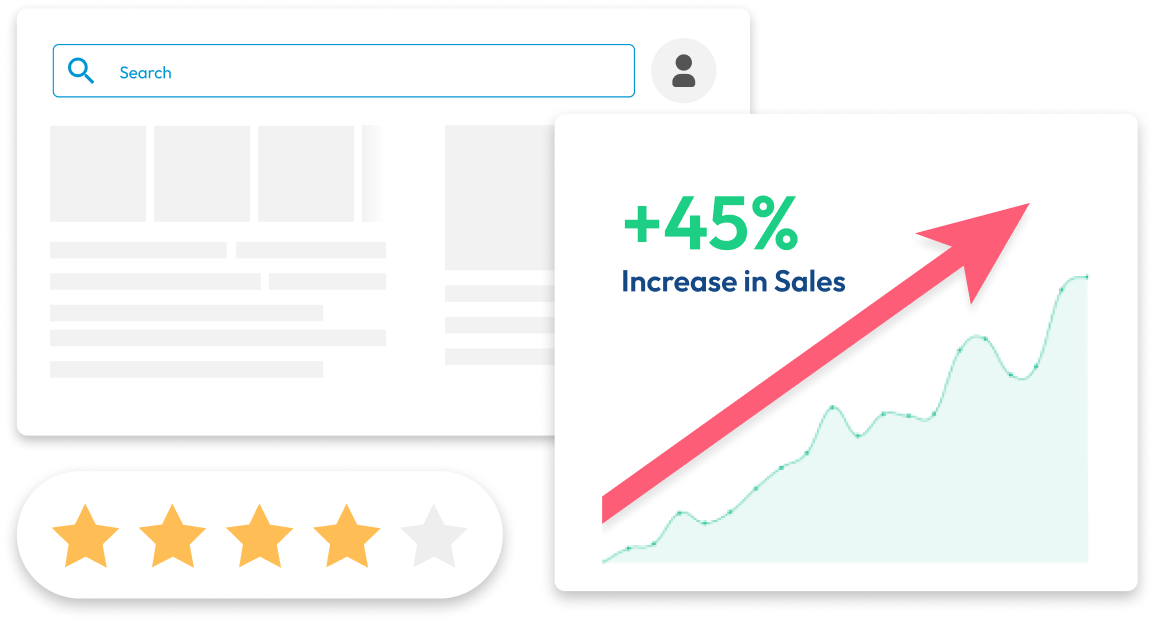Get a free consultation with us!
Stop wasting money and unlock the hidden potential of your advertising.
- Discover the power of intentional advertising
- Reach your ideal target audience.
- Maximize ad spend efficiency.

Producing interesting content is more important than ever nowadays because everyone wants to do it. According to 70% of marketers, increased audience interaction equals greater loyalty and trust. For this reason, learning to produce resonant content is a game-changer for marketers, content producers, and small business owners. This guide will help you take your content from good to unforgettable by helping you figure out who your target audience is, how to make it search engine-friendly, and how to make content people want to read and engage with. Stop wasting money and unlock the hidden potential of your advertising. Engaging content is like a magnet-it draws people in and keeps them stuck to your page or website. It's the kind of content that makes readers stop scrolling, pay attention, and hit the CTA button. Have you ever thought about how KFC’s finger-lickin’ good can make one drool for one more piece of chicken? Engaging content sets successful brands apart from the rest - whether it's a blog post, a social media update, an email newsletter, or even a single tagline. For example, consider a fitness brand regularly posting workout tips on Instagram. Followers are more likely to engage when they share a post featuring a 30-day challenge with interactive stories, videos of real people completing the exercises, and motivational quotes. They comment, share their progress, and invite friends to join, creating a community around the brand's content. Creating engaging content requires more than good writing skills or knowing your brand like the back of your hand—it also involves a deep understanding of your audience, some strategic planning, and a lot of creativity too. When done right, engaging content can drive traffic, increase conversions, and build brand loyalty. Engagement is a key metric that indicates how well your content is performing. High engagement rates mean that your audience is consuming your content and interacting with it—liking, sharing, commenting, and even bookmarking it for later. Consider this scenario — you run a blog about healthy living. One of your posts about quick and easy smoothie recipes gets high engagement. Readers leave comments sharing their favourite combinations, others share the post on social media, and some even bookmark it for future reference when they have the time or some leftover bananas in their kitchen to use. This interaction boosts your post's visibility and creates a sense of community among your readers. Engaged audiences like this are more likely to become loyal customers. They trust your brand, value your insights, and are willing to invest time and money in what you offer. Engagement is a powerful differentiator in a crowded digital space that can set your brand apart from competitors. To create engaging content, you need to know who you're creating it for. This way, you can drive the right interactions. But how do you get to know your audience? 1. Identify Their Needs Start by identifying your audience's problems, pain points, and questions. Use tools like Google Analytics, social media insights, and customer feedback to gather data on what your audience is looking for. Once you've identified their needs, tailor your content to provide solutions and answers. This shows your audience that you understand them and are committed to adding value to their lives. 2. Create Buyer Personas Buyer personas are fictional representations of your ideal customers. They help you visualise your audience and create content that speaks directly to them. To create buyer personas, gather data on your audience's demographics, behaviour, and preferences. Include details like age, gender, occupation, interests, and challenges. The more specific you are, the better your content can be tailored to their needs. Remember, your goal is to make your audience feel like you're speaking directly to them. Now that you understand your audience, you need content creation strategies to keep them engaged. There are several ways to make your content stand out: 1. Storytelling Techniques Storytelling helps you connect with your audience on an emotional level and makes your content more memorable. Here are some storytelling techniques to consider: 2. Using Visuals Visuals make your content more engaging. They break up text, add visual interest, and help convey complex information more easily. Here are some types of visuals to incorporate: 3. Interactive Content Interactive content encourages your audience to participate actively, making it highly engaging. Here are some types of interactive content to consider: 4.Optimising Content for SEO To ensure your content reaches your target audience, optimising it for search engines is essential. Here are some key SEO practices to follow: 5.Promoting Your Content Creating engaging content is just the first step. To reach a wider audience, you need to promote your content effectively. Here are some strategies to consider: To understand the impact of your content, it's essential to measure its performance. Use analytics tools to track key metrics like page views, engagement rates, and conversions. Analyse the data to identify what's working and what's not. Use these insights to refine your content strategy and create even more engaging content in the future. Your audience's feedback is valuable for improving your content. Encourage them to share their thoughts, suggestions, and questions. Use surveys, polls, and social media to gather feedback. Listen to your audience and make adjustments based on their input. Show them that you value their opinions and are committed to providing content that meets their needs. Creating engaging content is a continuous process that requires understanding your audience, strategic planning, and creativity. Following the tips outlined in this guide, you can create content that resonates with your audience, drives interaction, and builds brand loyalty. Remember, the key to success is experimenting, learning, and adapting. Stay up-to-date with the latest trends and best content creation and SEO practices. With dedication and effort, you'll be able to master creating engaging content that stands out. Consider working with our expert content team at Xugar — we can help you refine your approach and achieve your content marketing goals. Contact us today.Get a free consultation with us!
The Power of Engaging Content
Why Engagement Matters
Understanding Your Audience
Content Creation Strategies
Measuring Content Success
Adapting to Audience Feedback
Conclusion:





WINNER

FINALIST

FINALIST

WINNER

WINNER

FINALIST

FINALIST

WINNER
